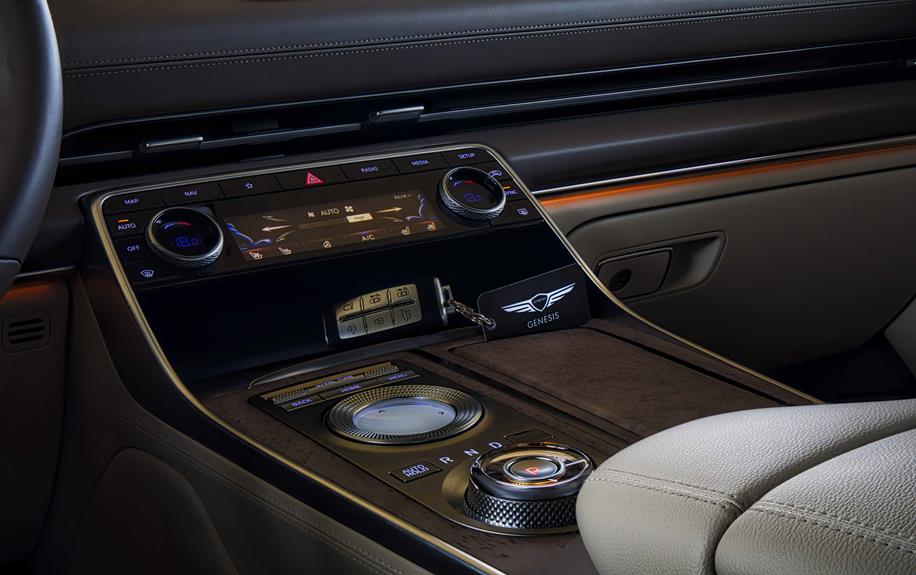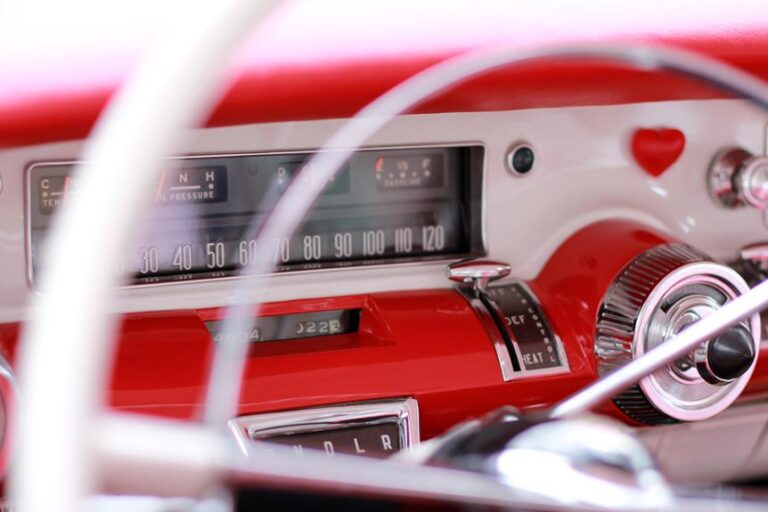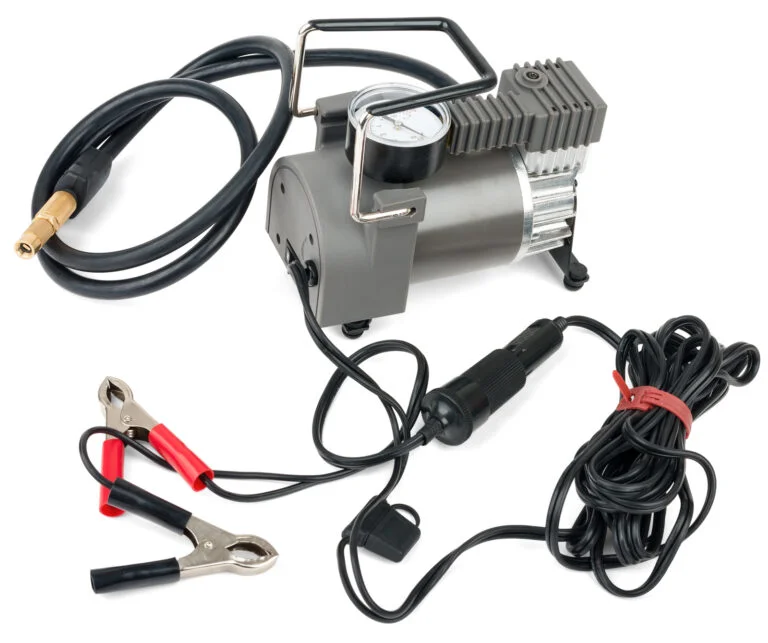Shift Faster: Transmission Shift Kit Benefits
In the realm of automotive performance, speed and efficiency often sit on opposite sides of the spectrum. However, transmission shift kits bridge this divide, effortlessly combining rapid gear changes with optimized fuel economy. This article explores the mechanics, advantages, and maintenance of shift kits, providing a comprehensive guide for those seeking to enhance their vehicle's performance. Dive in to debunk common misconceptions and discover how transmission shift kits can liberate your driving experience.
Key Takeaways
- Transmission shift kits improve how automatic transmissions shift between gears.
- They result in faster and firmer gear changes, reducing shift overlap.
- Shift kits can be used in racing applications for quick and precise shifts.
- Installing a shift kit can extend the service life of the transmission system and reduce long-term maintenance costs.
Understanding Transmission Shift Kits
A car owner's knowledge of transmission shift kits is crucial to fully comprehend their benefits and functionalities. A transmission shift kit is a set of components installed into an automatic transmission, designed to improve how it shifts between gears. These kits can be a critical part of drivetrain upgrades, especially for those seeking liberation through enhanced vehicular performance and control.
Transmission shift kits can provide a multitude of benefits. They can reduce or eliminate shift overlap, resulting in faster and firmer gear changes. This can lead to increased transmission life due to less wear and tear on clutches and bands. These kits are often used in transmission modifications for racing applications, where quick and precise shifts are paramount.
It's also worth noting that transmission shift kits can improve fuel efficiency. By reducing shift overlap, the transmission spends less time in neutral, which can lead to less wasted fuel.
Transmission shift kits can be an integral part of any drivetrain upgrade. For the car owner who seeks liberation through control and performance, understanding the benefits and functionalities of these kits is key.
The Mechanism Behind Faster Gear Changes
Delving into the mechanism behind faster gear changes, it's essential to break down how transmission shift kits modify the standard operation of an automatic gearbox. The working principle of these kits is grounded in altering the transmission's hydraulic pressure, providing a more immediate response time during gear shifts.
Primarily, a torque converter upgrade is a key component. This modification optimizes the transfer of engine torque to the transmission, reducing the delay that often characterizes traditional automatic gearboxes. A more responsive torque converter means quicker and smoother gear shifts, a significant boon for those seeking greater control over their vehicle's performance.
Moreover, a supercharger pulley upgrade can also contribute to enhancing gear shift speed. By increasing boost and power output, this upgrade strengthens the overall performance of the vehicle, further enabling faster gear changes.
In essence, these upgrades work in tandem to expedite gear shifts, thereby liberating drivers from the sluggish response time of standard automatic transmissions. With this comprehensive understanding of the mechanism, we can now transition to exploring the top advantages of transmission shift kits.
Top Advantages of Transmission Shift Kits
Transmission shift kits offer a range of benefits that can significantly enhance vehicle performance. These advantages primarily include smoother, faster gear changes, and increased fuel efficiency, largely attributed to the reduction in transmission slippage. Moreover, these kits serve as a cost-effective maintenance solution, extending the service life of your vehicle's transmission system.
Improved Vehicle Performance
Boosting your vehicle's overall performance, the installation of a transmission shift kit offers a range of benefits that can significantly enhance your driving experience. This modification provides a more direct, responsive connection between you and your vehicle, leading to improved performance.
Here are some key advantages of transmission shift kits:
- Increased Shift Speeds:
- Faster Gear Changes: Transmission shift kits reduce the time it takes to switch gears, providing quicker response times.
- Enhanced Acceleration: Quicker gear changes can improve the vehicle's acceleration rate, enhancing overall performance.
- Improved Fuel Efficiency:
- Reduced Slippage: Shift kits help limit transmission slippage, which can increase fuel efficiency.
- Better Power Transfer: Improved transmission performance leads to more effective power transfer, further boosting fuel efficiency.
Cost-Effective Maintenance Solution
In addition to performance enhancements, a significant advantage of transmission shift kits is their role as a cost-effective solution for vehicle maintenance. These kits are designed to decrease the wear and tear on your vehicle's transmission system by improving the hydraulic pressure management. This results in less slippage between gears and smoother transitions, ultimately extending the transmission's lifespan.
Moreover, by reducing the frequency of transmission repairs or replacements, the shift kit can considerably reduce long-term maintenance costs. It is a one-time investment that pays off in the long run, freeing vehicle owners from recurring, costly transmission-related issues. It also minimizes downtime, hence increasing productivity. Hence, transmission shift kits not only enhance performance but also provide a liberating, cost-effective maintenance solution.
Choosing the Ideal Shift Kit for Your Needs
When choosing the ideal shift kit for your needs, there are several factors that warrant consideration. Initially, one must evaluate the myriad of shift kit options available in the market, understanding their different functionalities and performance enhancements. Further, it's crucial to ascertain the compatibility of the chosen kit with your vehicle model, and conduct a thorough cost-benefit analysis to ensure the investment is worthwhile.
Evaluating Shift Kit Options
Selecting the optimal shift kit for your vehicle will require careful consideration of several factors, including your driving habits, performance goals, and budget constraints.
When evaluating your shift kit options:
- Consider your driving habits:
- A daily commuter might prefer a smoother shifting kit, while a racing enthusiast may opt for a kit that provides quick, hard shifts.
- Reflect on your performance goals:
- Do you seek improved fuel efficiency or aggressive acceleration? Your goals will dictate the type of kit that suits your needs best.
Compatibility With Your Vehicle
Ensure you examine the compatibility of the shift kit with your vehicle make and model, and also take into account your unique driving needs and expectations. Different shift kits are designed for varying transmission types, so it's crucial to select one that aligns with your vehicle's specifications. For instance, a kit designed for a 4-speed automatic transmission may not work with a 6-speed manual one. Furthermore, consider your driving habits. If you frequently tow heavy loads or engage in high-performance driving, a shift kit that enhances shift firmness and reduces transmission wear would be ideal. However, for everyday city driving, a kit that prioritizes smoother shifts may be more suitable. Always consult with a transmission professional before making a decision.
Cost-Benefit Analysis
Analyzing the cost-benefit ratio of various shift kits in the market is an important step in identifying the most ideal one that suits your specific transmission needs. It is essential to consider the following aspects:
- Cost of the kit:
- Initial purchase price
- Potential maintenance and repair costs
- Expected benefits:
- Improved transmission performance
- Potential fuel economy improvements
Each kit will offer a unique balance of these factors. A more expensive kit might provide superior performance and durability, saving you money in the long run. Conversely, a cheaper kit might be sufficient if your transmission needs are modest. Ultimately, the ideal shift kit is the one that provides the greatest value for your specific needs and budget.
Installation Process for Transmission Shift Kits
The process of installing a transmission shift kit involves several intricate steps that require both precision and understanding of the vehicle's transmission system. The initial stage involves accessing the transmission valve body, which typically requires unbolting the transmission pan. It is crucial to gently remove the pan to avoid damaging the gasket, which needs to be reused during reassembly.
Once the valve body is exposed, the next step is to install the shift kit components. These can include replacement springs, valves, and spacers, which are designed to modify the hydraulic flow within the valve body and ultimately improve shift performance. Each component must be installed in the correct location and orientation, as detailed in the shift kit instructions.
After the shift kit components are installed, the valve body and pan must be reassembled and reinstalled on the vehicle. The final step is to refill the transmission fluid to the manufacturer's specified level. This process requires a high degree of precision to ensure that the shift kit functions correctly and delivers the desired improvement in shift speed and smoothness.
Maintaining Your Transmission Shift Kit
Regular maintenance is an integral part of owning a vehicle equipped with a transmission shift kit, as it helps prolong the lifespan and enhance the performance of the kit. Regular inspection and servicing can prevent potential issues from escalating into costly repairs or replacements.
A structured maintenance regimen should include two primary components:
- Fluid Check and Replacement:
- Check Transmission Fluid: The transmission fluid should be checked regularly for color and level. A dark color or burnt smell indicates the need for a fluid change.
- Replace Transmission Fluid: Transmission fluid should be replaced as recommended by the manufacturer or as needed based on driving conditions and the vehicle's performance.
- Inspection and Adjustment of the Shift Kit:
- Kit Inspection: Regular inspections could help identify any worn-out parts or potential issues that may affect the kit's performance.
- Kit Adjustment: Adjustments should be made as necessary to ensure optimal performance. This could include adjusting the shift firmness or the shift points.
Adhering to regular maintenance not only extends the life of your shift kit but also ensures your vehicle's optimal performance. It ultimately liberates you from unexpected breakdowns, promising a smooth and hassle-free driving experience.
Real-Life Scenarios: Shift Kits in Action
In Mike's experience as a racecar driver, he has found that a transmission shift kit not only improves his vehicle's performance, but also enhances his overall driving experience. By reducing the lag time between gear shifts, the shift kit provides an immediate response, which is crucial in the high-speed, split-second decisions that define racecar driving.
In another real-life scenario, consider Lisa, a truck driver who frequently hauls heavy loads. For her, a transmission shift kit is a game-changer. It extends the lifespan of her truck's transmission by reducing slippage, heat buildup, and wear. This translates into less downtime for maintenance and repairs, more efficient fuel consumption, and an overall smoother ride.
Shift kits are also beneficial for daily drivers like John, who simply wants a more responsive and enjoyable ride. The kit's ability to provide firm and swift gear changes makes his daily commutes smoother and more efficient.
Common Misconceptions About Transmission Shift Kits
Over time, several misconceptions about transmission shift kits have emerged, often leading to confusion and misinformation among potential users. These misconceptions stem from a lack of understanding of the mechanical principles involved in transmission shift kits and their functionality.
The primary misconceptions revolve around two common themes:
- Shift kits damage the transmission:
- In actuality, shift kits are designed to enhance the durability and performance of the transmission by reducing the amount of slip during gear changes. This misconception arises from the misunderstanding that harder shifts equate to more wear on the transmission, when in reality, it's the opposite.
- Shift kits make the ride uncomfortable:
- While shift kits do result in a more noticeable shift, they don't necessarily make the ride uncomfortable. They provide a firmer, more controlled shift, which can be seen as an improvement, particularly in high-performance or heavy-duty scenarios. This misconception comes from a preference for smooth, almost unnoticeable shifts, which can often be a sign of a slipping, and therefore failing, transmission.
Frequently Asked Questions
What Are Some Common Issues That May Arise After Installing a Transmission Shift Kit?
Common issues after installing a transmission shift kit may include increased transmission fluid pressure, potential for premature wear out, rough shifts, and possible damage to the transmission if not properly installed.
Are There Any Specific Brands of Transmission Shift Kits That Are Recommended by Professionals?
On the highway of performance upgrades, professionals often recommend B&M, TransGo, and Superior transmission shift kits. Renowned for their quality and reliability, these brands help gearheads achieve smooth, swift shifting for optimal vehicle performance.
How Does the Type of Vehicle or Model Impact the Effectiveness of a Transmission Shift Kit?
The effectiveness of a transmission shift kit is significantly influenced by the vehicle's type and model. Specific kits are designed for different transmissions, ensuring optimal performance and compatibility with the vehicle's existing systems.
Are There Any Environmental or Sustainability Concerns Associated With Using Transmission Shift Kits?
Like a well-tended garden, a transmission shift kit can have minimal environmental impact. These kits don't directly contribute to sustainability concerns, but indirectly, improved transmission efficiency can lead to lower fuel consumption.
What Kind of Warranty or Guarantee Is Typically Provided With a Transmission Shift Kit?
Typically, transmission shift kits come with a limited warranty, which generally covers defects in materials and workmanship. The duration and terms of the warranty may vary across manufacturers and specific product models.
Conclusion
In conclusion, transmission shift kits significantly enhance vehicle performance by ensuring swift and smooth gear changes. Selecting an appropriate kit, proper installation, and diligent maintenance are critical components for maximizing benefits. Despite prevailing misconceptions, transmission shift kits do not cause damage when used correctly. They serve as a robust tool, transforming the driving experience into a seamless dance of mechanical precision.







